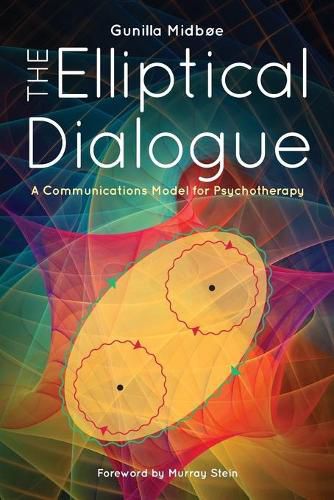The Elliptical Dialogue: A Communications Model for Psychotherapy
Gunilla Midboe

The Elliptical Dialogue: A Communications Model for Psychotherapy
Gunilla Midboe
This title is printed to order. This book may have been self-published. If so, we cannot guarantee the quality of the content. In the main most books will have gone through the editing process however some may not. We therefore suggest that you be aware of this before ordering this book. If in doubt check either the author or publisher’s details as we are unable to accept any returns unless they are faulty. Please contact us if you have any questions.
The Elliptical Dialogue is presented in this book as a model for communication, dialogue and reciprocal relationship in analytical work, psychotherapy and supervision. The book also suggests new clinical and theoretical perspectives for analytical psychology by integrating systems theory from Gregory Bateson and language theory from Ludwig Wittgenstein.
In analytical work as well as in everyday life the essence of human existence sometimes shows itself as unguarded moments of mutual meeting. They cross time and space and become everlasting experiences. Such a moment opened up for Gregory Bateson when he met C G Jung’s poetic text Septem Sermones ad Mortuos. The connection between Bateson and Jung’s view on mind and matter is carefully elaborated in the text. In interaction with Wittgenstein’s view of the deep architecture of nonverbal and verbal language the Elliptical Dialogue points toward an integrated perspective for clinical use both in analytical work and supervision.
Jungian psychoanalysts, psychotherapists and experienced clinicians, supervisors and students as well as the general public interested in analytical psychology, I hope, will be able to catch the deeper sense of powerful creative energy of elliptical dialogues in personal and professional life.
Jungian psychoanalysts, psychotherapists and experienced clinicians, supervisors and students as well as the general public interested in analytical psychology, will be able to catch the deeper sense of powerful creative energy of elliptical dialogues in personal and professional life.
Table of Contents:
PART I: THE ELLIPTICAL DIALOGUE
1. The elliptical dialogue as a map for Jungian psychoanalysis
2. The elliptical dialogue as a map for Jungian supervision
3. The elliptical dialogue and its limitations
PART II: THE ELLIPTICAL DIALOGUE AND TRANSFORMATION IN JUNGIAN PSYCHOANALYSIS – THE CLINICAL PART
4. The elliptical dialogue and individuation
5. Symbol as transformation
6. Language as transformation
7. Active imagination as transformation
PART III: THREE THEORIES IN THE ELLIPTICAL DIALOGUE – THE SYNTHESISING, INTEGRATIVE PART
8. The connecting web - a kind of fishing net
9. Systems theory – Bateson’s contribution and some conclusions for dialogue with today’s analytical psychology.
10. Language theory – Wittgenstein’s contribution and how dialogue is used in analytical psychology
11. Analytical psychology – Jung’s contribution to the elliptical dialogue
12. The Elliptical Dialogue as a Communications Model for Psychotherapy
REFERENCES
INDEX
This item is not currently in-stock. It can be ordered online and is expected to ship in 7-14 days
Our stock data is updated periodically, and availability may change throughout the day for in-demand items. Please call the relevant shop for the most current stock information. Prices are subject to change without notice.
Sign in or become a Readings Member to add this title to a wishlist.


